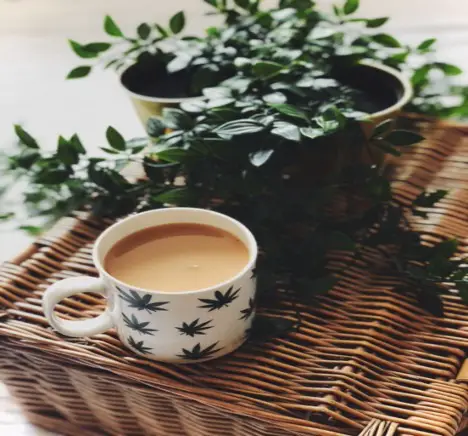Are you trying to decide between growing indica or sativa seeds? If you visit a dispensary or meet with your stoner friends, you always hear these titles thrown around. Is sativa an upper or downer, and do indicas glue you to the couch?
Read on to discover everything about the two cannabis types. We also explain their physical differences, the effects of indicas and sativas, and touch a little on hybrids.
Stick around for a guide to finding your perfect strain.

What are indicas?
Before we give you the rundown, here are a few classic indica features:
- Short and bushy plants
- Typically higher CBD levels than sativas
- Potent THC range
- Best used at night
- Plants are mainly resilient to harsh conditions
- Reported relaxing and sedating effects
- Body high
Sit back, change into your comfy PJs, put on your favorite Netflix show, and sink into blissful indica waves. Their gentle embrace feels like floating on clouds while a full-body stone relieves your tension.
Users believe these cultivars are mellow, relaxing members of the cannabis family. Tokers smoke indicas for a break, to calm stress or sleep deeply.
These strains are popular in the medicinal field as the proposed benefits of indica plants may help with various health conditions.
Indicas might also relieve pain as well as drugs like ibuprofen or acetaminophen without the reported side effects. This cultivar is commonly used in the evening as a nightcap, especially among people with sleep problems.
If you’re wondering why indicas make you energetic, it’s important to note this strain doesn’t deliver the same buzz for everyone. Some people use the cultivar for energy, creativity, and focus.
What separates indicas from sativas? Their differences relate to their structure and growing requirements.
Indicas originated from cold, northern climates and grew shorter as a result.
These plants are typically stout and bushy. They also tend to have faster growth cycles.
What are sativas?
Here are some typical sativa features:
- Enjoy hot climates and thrive in lots of sunlight
- Thin, tall, and light foliage
- Reportedly energizing
- Typically have a low CBD, high THC ratio
- Preferable for daytime use
- More potent psychedelic effects than indicas
- Head high
Wake up, get energized, run that 5k, or hit the books; these strains are for the go-getters. Is sativa an upper or downer? These cultivars are like the hyperactive cousins of indicas. They’re said to have uplifting effects that make you happy, focused, and creative.
Many users believe these variants are daytime strains and unsuitable for night use because of their energizing abilities. Not all of them make you feel like dancing; some sativas have a relaxing or sedating buzz.
The cerebral high doesn’t typically affect mobility, enabling users to perform physical activities unaffected. It mainly increases concentration and boosts your mood.
These cultivars are also said to have a range of medical applications, including pain reduction, increasing focus, and reducing sadness or depression. Their mostly non-sedating effects make them ideal for users who want relief without being couch-locked.
Can sativas make you tired? Like indicas, they don’t cause specific results, and your reactions depend on the cultivar and your body’s response. Some people even use these ‘energizing’ strains to fall asleep or relax.
Sativas originate from warm, humid climates and have a tall, lanky structure with less bushy foliage than indicas. They typically take longer to grow and aren’t as easy to cultivate as their chilled-out counterparts.
Get the best of both worlds with hybrids
When sativas and indicas come together, you get a taste of both these types. Their effects work together in harmony, creating the perfect balance. Here’s what to look forward to:
- Wide range of growing techniques and preferred climates
- Varying plant structures
- Combination of effects
- Usually dominant in either sativa or indica
- Day or nighttime use, depending on the strain’s qualities
- Body and mind buzz
Hybrids are a mixture of sativa and indica strains, so their growing techniques, structure, and yields depend on their parents.
They offer a blend of the stereotypical sativa and indica effects, so you don’t become overwhelmed with relaxation or energy.
Depending on the strain’s characteristics, users can smoke most hybrids anytime. There are different types of these cross-breeds to suit your desires.
If you’re looking for something that’s primarily relaxing, go for an indica-dominant cultivar. There are also mainly sativa strains for more energizing properties. Remember that reactions may differ.
Does sativa make you sleep? Some users take them as a nightcap, so it’s crucial to learn your body’s unique response.
Hybrids are a way to experience both types of effects. Some provide almost equal amounts of both traits.
Which is the best type?
The best type depends on what you’re looking for and how you react to compounds like THC and CBD. While there are guides on what to expect from indicas and sativas, they’re not always accurate.
Here’s what to consider when searching for your ideal strain:
- Are you treating a medical condition or using weed recreationally? Therapeutic users may benefit more from high-CBD strains and indicas.
- Know your tolerance. Consider the effects of indicas vs. sativas on anxiety and other health conditions. High-THC, low-CBD strains may not be the best pick if you’re prone to paranoia.
- Consider cultivation requirements. If you’re growing cannabis seeds, check that they suit your expertise.






